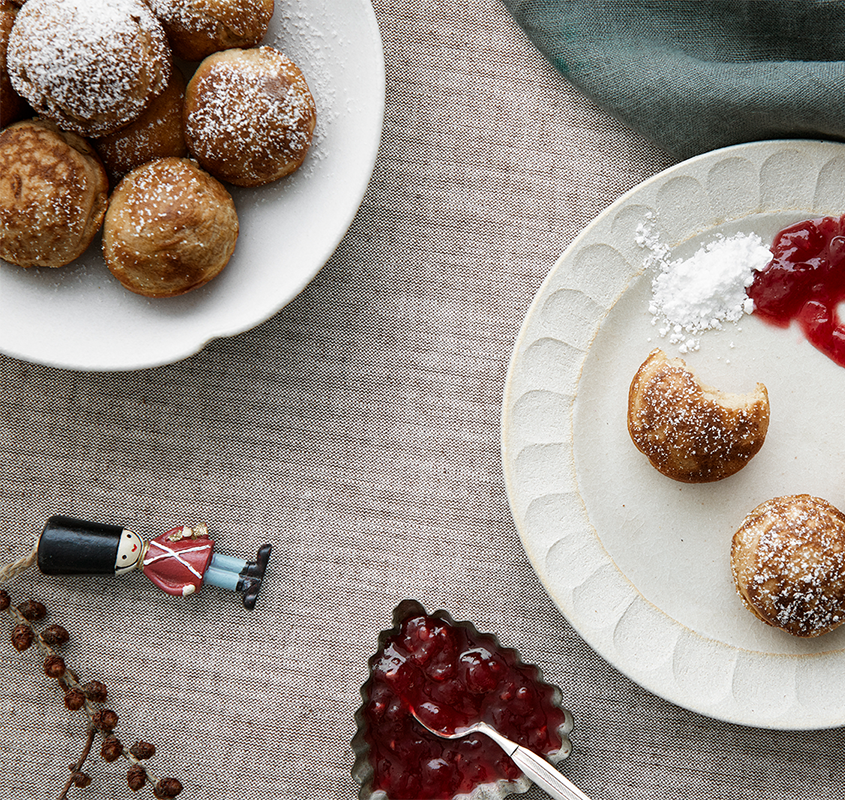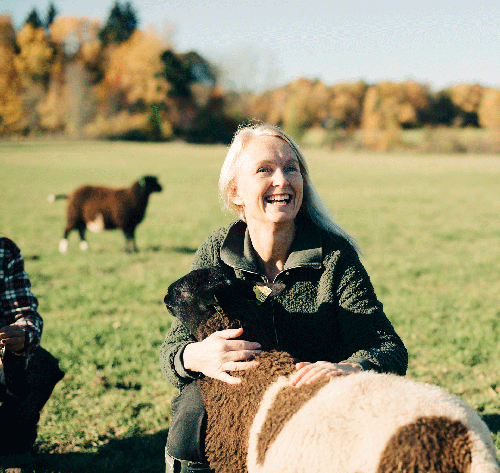Danish holidays and traditions
Christmas: The highlight of the long Danish winter
Denmark's long winter is at its darkest in mid-December, when the weak sunlight lasts only about seven hours per day. Ever since the Viking Age, and even earlier, people living in the Scandinavian region have held winter celebrations to bring light and joy to the darkness, and after Christianity was introduced into Denmark around the year 958 AD, the festival has been called Christmas.
Christmas dominates December and much of November in Denmark. Shopping streets and homes are decorated with colourful Christmas lights, and local bakeries are full of Christmas delicacies like klejner and pebernødder (ginger cookies). There are even special Christmas beers and gløgg - a cup of warmed wine mixed with brandy and dried fruit.
Danish Christmas is celebrated in the evening on December 24, and the country virtually shuts down. Even the city buses stop running between 17.30-22.00 so that everyone can enjoy dinner with their families. Denmark's electrical and gas utilities can measure a spike in usage when people across the country turn on their ovens to cook the traditional roast duck, roast pork, or roast goose. The traditional side dishes are caramelised potatoes and pickled red cabbage.


After dinner, the whole family joins hands and dances around the Christmas tree while singing traditional Christmas carols. The tree is usually a Norwegian spruce with homemade decorations and sometimes freshly lit candles. Finally, it is time to unwrap the gifts, and sometimes to attend a midnight service at the local church.
On December 25 and 26, many Danes visit relatives or friends they were not able to be with on Christmas Eve. A traditional Christmas lunch with karrysild (herring in curry) and æbleflæsk (apple porridge with pork) is often followed by a group nature walk. Most shops and restaurants in Denmark are closed on December 24, 25, and 26.
Did you know
Easter and spring festivals
Because Easter is a moving holiday, it sometimes falls in March when Denmark is still quite chilly, and sometimes in late April, when the bright Danish spring is already well underway. Whatever the weather, Easter week is the traditional opening of Tivoli, the beloved amusement park in downtown Copenhagen, which dates from 1843.
Danish families usually get together for a big Easter lunch that lasts all afternoon. Traditions such as painting hard-boiled eggs in Easter colours, going on egg hunts, and rolling eggs downhill are popular among children and adults alike.
The spring holiday calendar in Denmark also includes Whitsunday and Pentecost, as well as Great Prayer Day - a holiday celebrated only in Denmark. These are days off work when many shops are closed, but they have few special traditions surrounding them. Most Danes use them as a chance to escape to their summerhouses in the countryside.
May 1, the International Worker's Day, is a partial holiday in Denmark. People in the trade union movement may have a day off work, but most businesses are open.
Another partial holiday is the Danish Constitution Day, on June 5. A few businesses close part of the day, but most are open and Denmark generally does not hold parades or other festivities to mark the day.
However, the Danish embassies and missions abroad often invite their local counterparts and the local Danish community for social events highlighting Danish values such a democracy, equality and human rights.
Traditions help cement continuity as a society. They are celebrations and customs handed down from one generation to the next.
Midsummer festival of Saint Hans
The height of Danish summer is celebrated on the evening of June 23 under the name Sankt Hans (Saint Hans), who is known in English as John the Baptist. The festival of Sankt Hans and the celebration of the summer solstice have pagan roots and date back to the days before Christianity came to Denmark.
Sankt Hans is generally celebrated with a dinner at home with family and friends followed by a stroll to a community bonfire, often by the beach, in a park, or on the shore of one of Denmark's many lakes.
There are speeches, and as the bonfire burns, the community sings the song "Midsommervisen", written by the Danish poet Holger Drachmann in 1885.

New Year's Eve in Denmark
If you're lucky enough to spend New Year's Eve in Denmark, you can look forward to watching the Queen's New Year's Speech on television at 18:00 - don't miss it!
All of Denmark tunes in to hear its monarch's statement about the year that has passed and the challenges of the year ahead. The New Year's Speech has been a national rallying point since 1942, when the much-admired King Christian X offered hope and encouragement to a country in the grip of a German occupation.
When the speech is over, it's time to get ready for the party ahead. New Year's Eve is one of the few times the casual Danes really love to dress up. Most Danes attend a party at the home of a friend or at a restaurant or nightclub, and a good selection of alcohol is usually on offer.
Just before midnight champagne and kransekage (baked marzipan cookies) is served, and everyone awaits the stroke of midnight on the clock tower at Copenhagen City Hall. When the clock strikes twelve, some Danes follow the more recent tradition of jumping off a chair or sofa and "into the new year." After that, many people go outside and set off amateur fireworks.
A few more Danish festivals...
Right before Lent begins in February, Danish children celebrate ‘Fastelavn'. This children's holiday involves dressing up in costumes and usually ends with the children trying to smash open a hanging cask called the "cat barrel". Fortunately, these days the barrel contains only candy. The girl or boy who manages to break open the barrel becomes the Kat Queen or Kat King of the festival.
Saint Morten's Day is November 10, and it is common to eat duck or geese on this day to celebrate the French Saint Martin, who hid within a flock of geese to avoid being named a bishop.
U.S. traditions such as Valentine's Day, Halloween, and Thanksgiving are also becoming more popular in Denmark.



